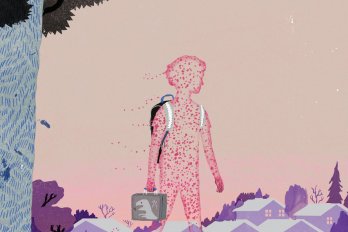This morning, I sit in the warmth of the living room darkness and nurse a cup of coffee, watching the ribbons of dawn take ownership of the day. Bright bands of pink, orange, pale yellows, and blues slide out of the horizon, while above the tinted hills to the west the dark sky moves off to sleep. In between these opposite heavens, the off-white separation waits to be filled by the approaching day. I am struggling to find the words to describe Larry Towell’s photographs of Attawapiskat First Nation in northern Ontario. I have witnessed these states of disillusionment at other reserves, where overcrowding is far too common. Where almost half of our homes require major repairs. I also know not all is lost: like digging for silver, gold, or amethyst in the earth’s depths, we can uncover the gems of triumph. Larry Towell’s photographs draw me in, and bring back memories of family, of belonging, and of survival.
I wonder if any of the old ones at Attawapiskat—sitting in the dark with a cup of coffee, or tea, and Carnation milk, elbow on a wobbly table with the flicker of a kerosene lamp or the dancing flames bouncing through the grates of a wood stove—have this privilege. In their one-room shacks, do they watch their children, cozy in their skimpy and layered blankets, with faces lit by the flames? The parent or grandparent fills the kettle with water and dilutes yesterday’s leftover porridge, and warms it for breakfast. Maybe they can add eggs and bannock, or fried baloney—Indian steak—to fill the little ones’ bellies. And then the small shoulder shake to wake the children, for somewhere there is a distant dream that opens to a better life, and it’s best to make that daily effort to attend school. And it is effort.
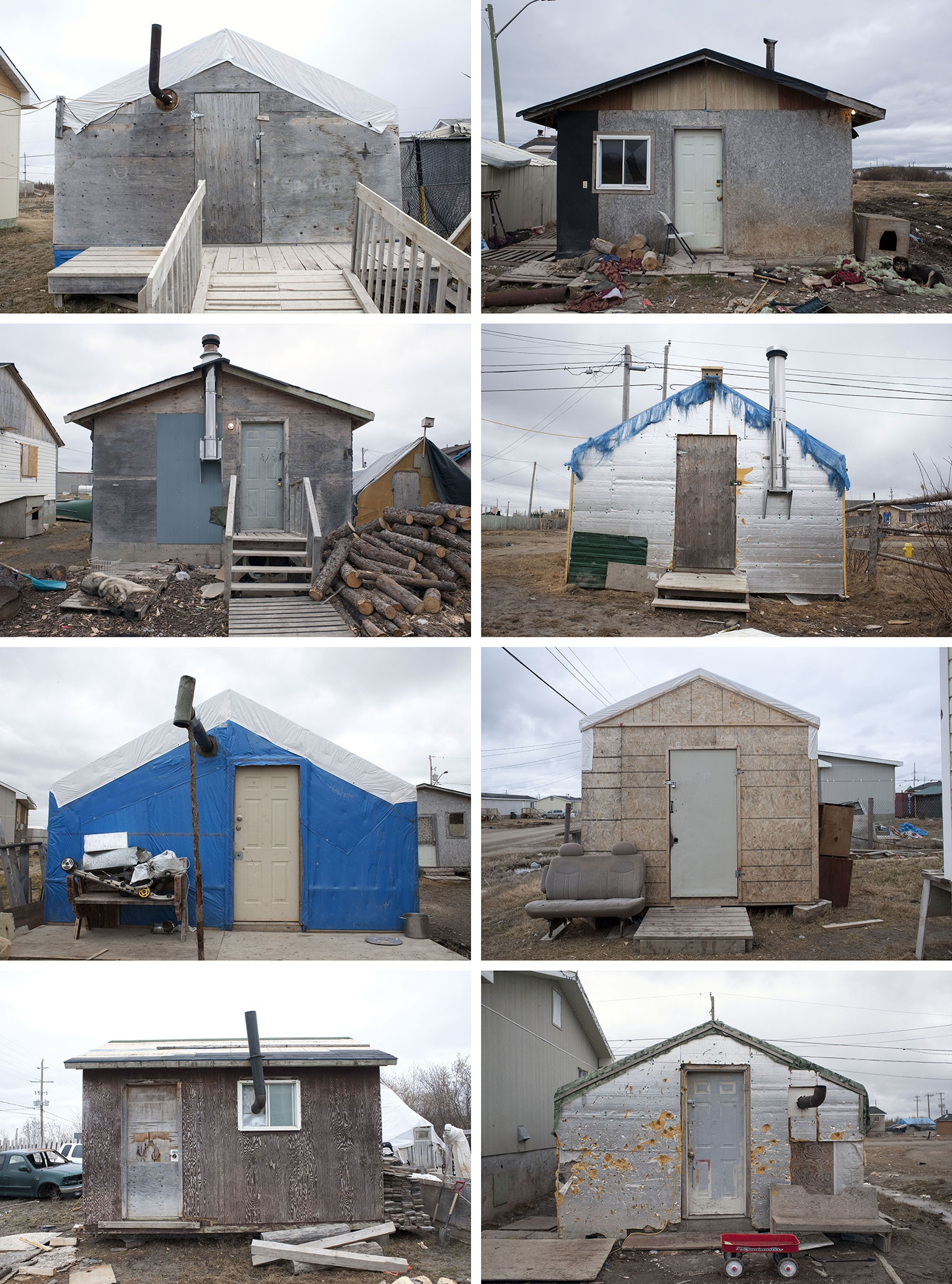
More than 150,000 First Nations, Metis, and Inuit children attended residential schools between 1857 and 1996. Often, they had to travel hundreds of kilometres to foreign and lonely places. Their clothes were the subject of ridicule. Their broken English, heavily accented with Cree or Ojibwa, forced them into silent retreat, or into violent storms. Even the length of their hair was a source of shame. How long could the dream of education hold its spell? Would anyone from their new surroundings show them compassion and help them get used to their new lives? Lives filled with unfamiliar expectations? In a fit of extreme disappointment, I too might return home defeated and place my fist through the wall of the agency building where all the false hope began.
Catholic priests founded Attawapiskat in 1893 and promised another dream. Some of them recorded the fruits of their proselytizing with photographs, which have been collected in an album. How difficult it must be to turn the pages and see how little has changed over the years. I cannot help but wonder what stories are embedded in those historical images, what stories are behind the priests and nuns who documented this community’s history. The Truth and Reconciliation Commission has travelled across the country, and story upon painful story has been laid at the feet of the crucified Christ. Yet, just as it occurs in my home community of Saddle Lake, Alberta, the Attawapiskat faithful continue to attend mass and share their deepest secrets with the man in the long dress. One time, a priest at the pulpit told us, his congregation, to procreate like crazy so the people could overthrow the government. Was he kidding? We all laughed at his audacity, especially coming from someone so high. But then again, the church is against contraception.
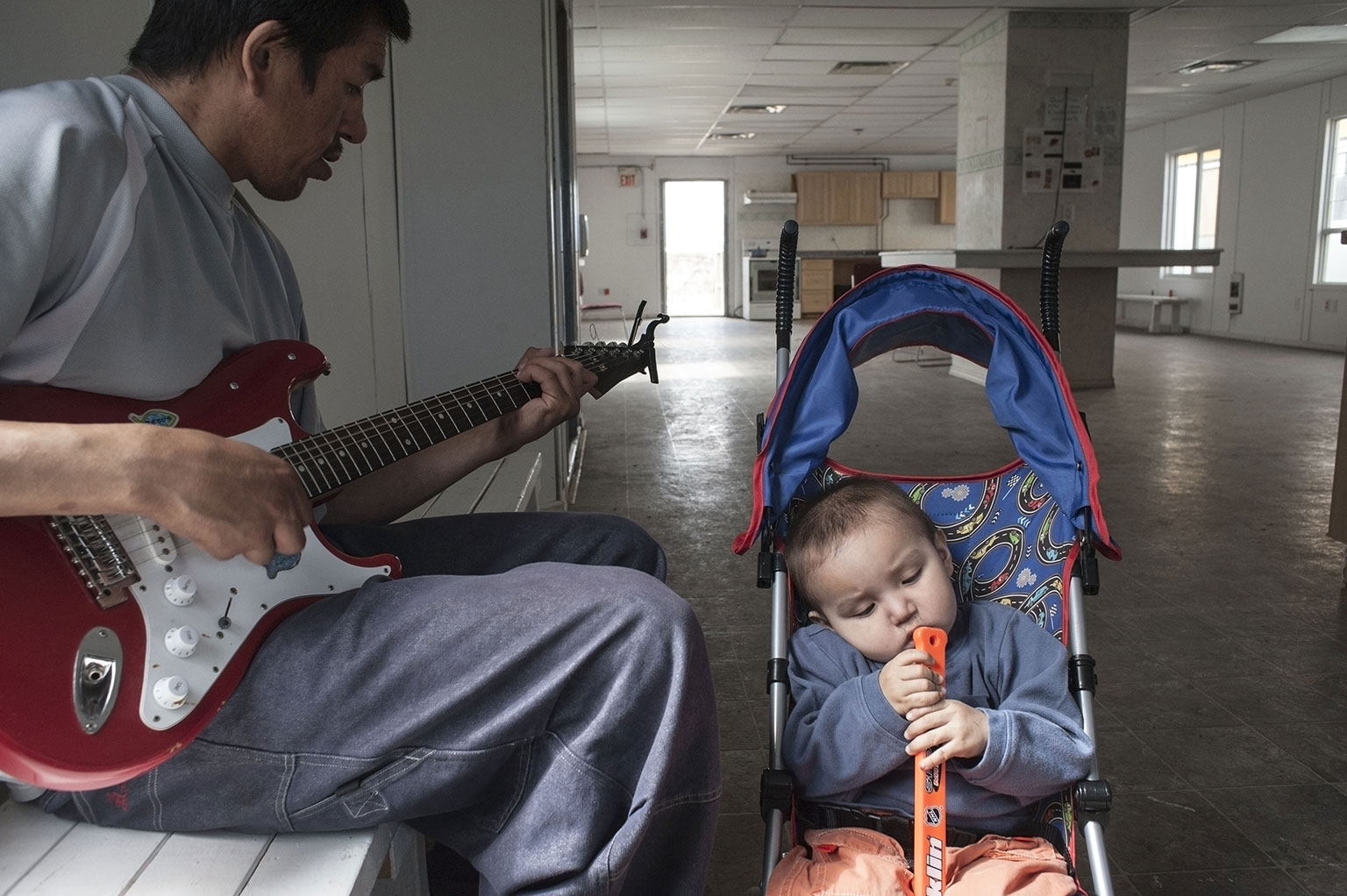
There is too much sexual, physical, and psychological abuse in our lives, and our communities pay for it in suicides. Our men are more likely to die by suicide than non-Aboriginal men; our women more likely than non-Aboriginal women. Our young people, in particular, die by suicide five to six times more often than non-Aboriginal youth. And then there are the slow suicides caused by diabetes, smoking, drinking, and obesity. The realities are criminal—despite what the government might say about sociological phenomena, about our missing girls and our abducted women. What about our emotional devastation and poverty?
Towell has chronicled the carnage of an almost destroyed culture. The important word is almost. In these myriad shambles, a divine expression of survival ensues: a goose is plucked, its clean wing an artist’s tool; the gathered co-operation of plumage harvesters laugh over stories and hot tea as a campfire crackles nearby; several deer are butchered, their meat smoked and dried, their hides hung on a fence to be stretched, scraped, and smoked; a traditional dress is shown off on a headless mannequin. At times, poverty is but a material absence: poverty of the spirit can be more detrimental. There is, however, a continuous see-saw relationship with the two. How difficult that must be.
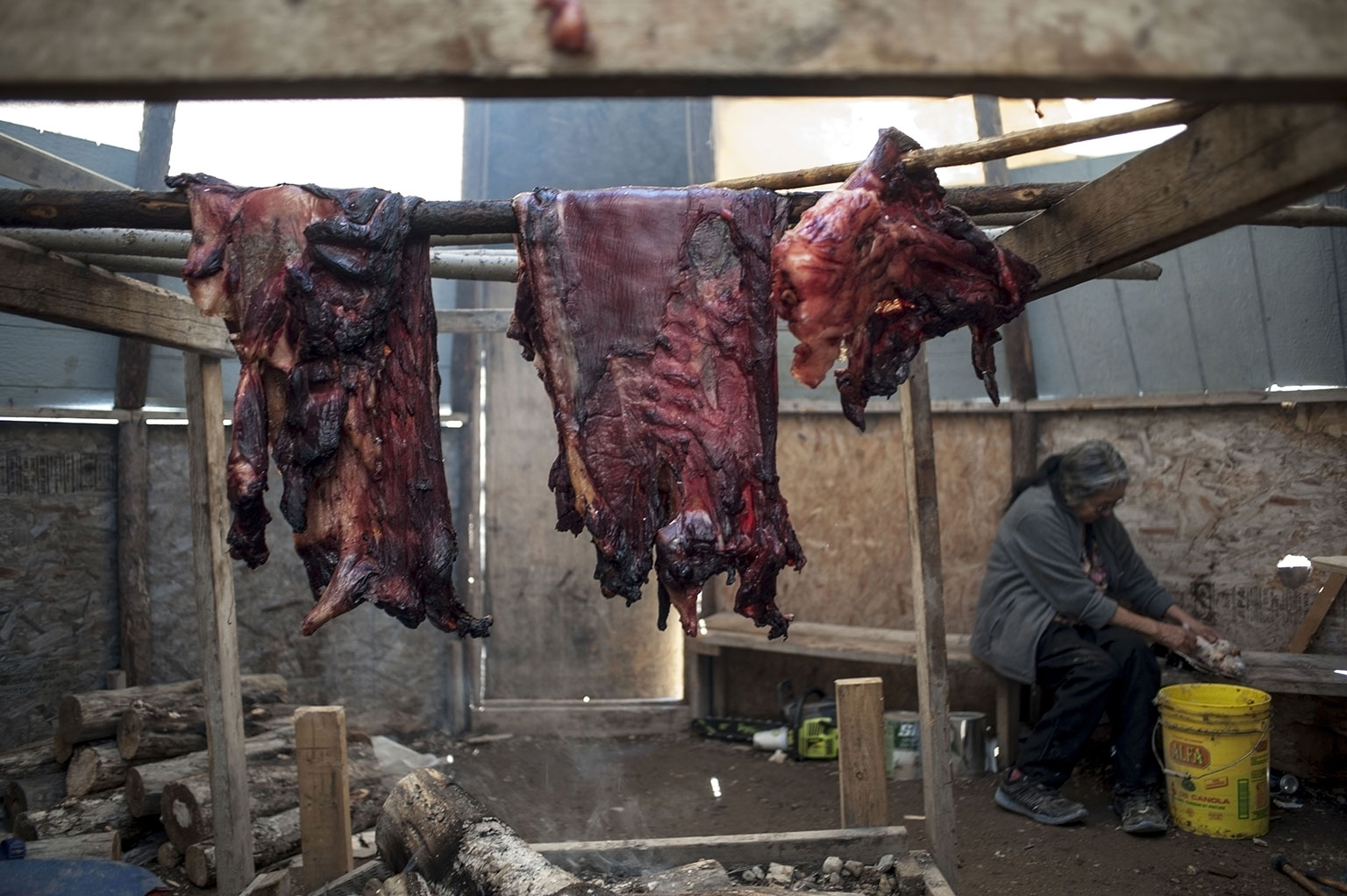
When the spirit is engaged, as it was with Idle No More, it has the capacity to make tremendous, positive change. But when the spirit is outraged with horrific circumstances, it lashes out. Unfortunately, the unsuspecting victim may be a family or community member. The spirit may even take the form of cannibalism—not literally, of course, but symbolically—through the unkindness of lateral violence, embezzlement, addictions, family violence. Witigo is a metaphor for greed and self-destruction, and who better fits that than a settler government, resource companies, and the churches?
Historically, and to this present day, these groups have terrorized the people into submission, into accepting poverty. They’ve robbed a people, by diminishing the lives that had previously sustained them. Now the people sit precariously, alternating between self-preservation and self-destruction, clinging to what can still be lost—still be taken. The churches continue to be better built and decorated than the houses in the villages they serve. The clergy continue to play on the hearts and souls of the people, robbing them of the money that could buy food for their families, pay off their credit cards, improve their housing conditions, and put proper clothing on their backs. Yet, the poor don’t complain loudly. They live in the country of the heart, for the heart may be the only place to which they can escape.
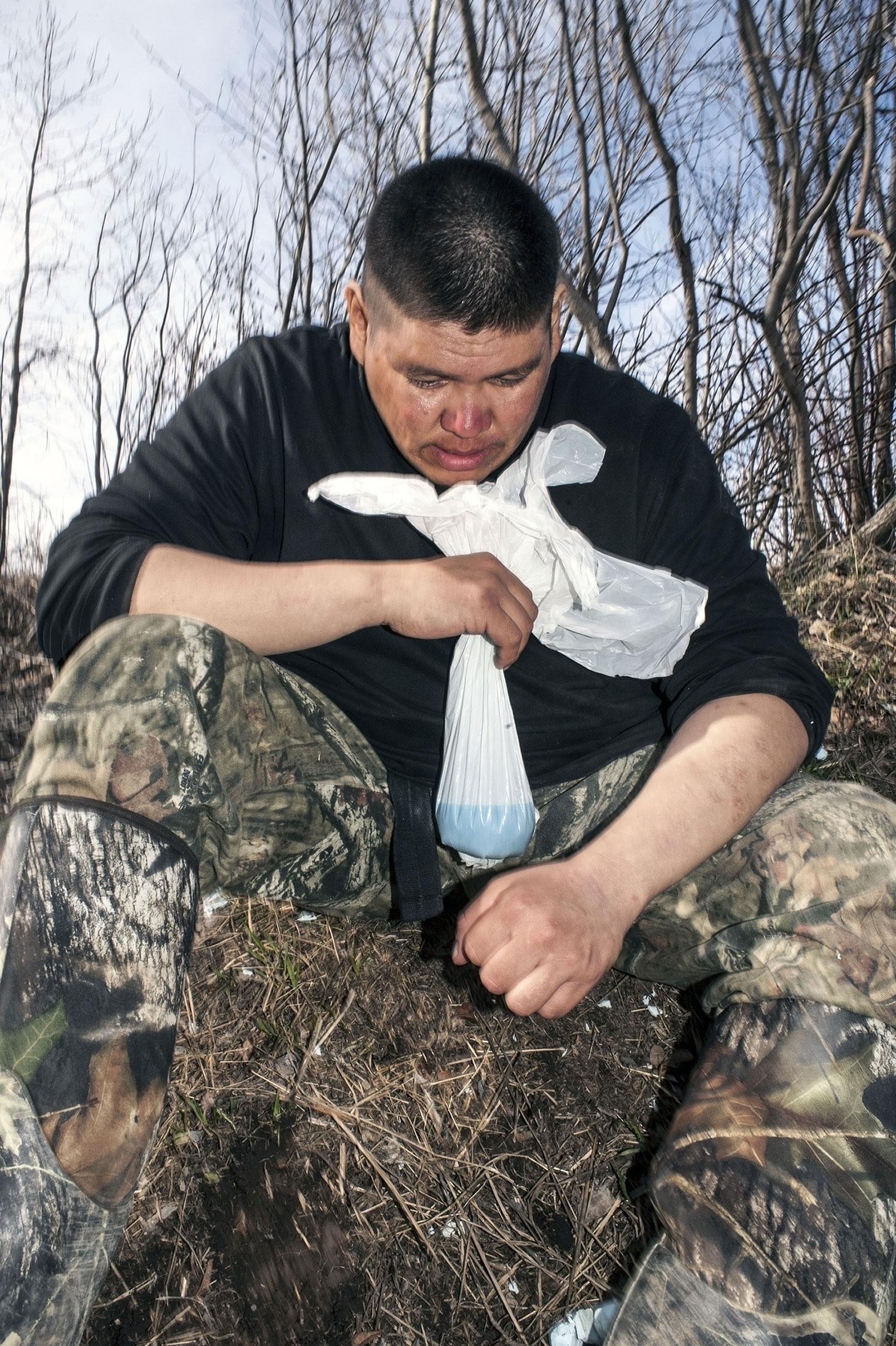
A grandmother rhythmically hums and grunts between the sides of caribou that she prepares for smoking. At the church, the devout walk the aisle toward the tabernacle to receive the Eucharist. In the back of the pews, an elder strums a guitar; he needs solace and hope, and he strives to bring these alive. He is an example of perseverance. In some communities, the drum remains silent—our supposedly heathen practices once outlawed, forbidden. Not only is the drum the heartbeat of the people, it is the heartbeat of the earth. When struck, its vibrations travel the circumference of the world. When the drum dies, the earth is diminished.
A young man holds a plastic bag filled with gas or glue. He inhales and sniffs, which gives him momentary forgetfulness as he escapes into giddy euphoria. In his stupor, he forgets his traumas. He forgets that he can no longer support his family, that hunting and fishing are momentary gratifications that can only fill bellies for a short while. There is no money to pay the power bill; there are no extras for Easter, Thanksgiving, Halloween, or Christmas. Forget the self-destruction. For this poisonous minute, the high is what counts.
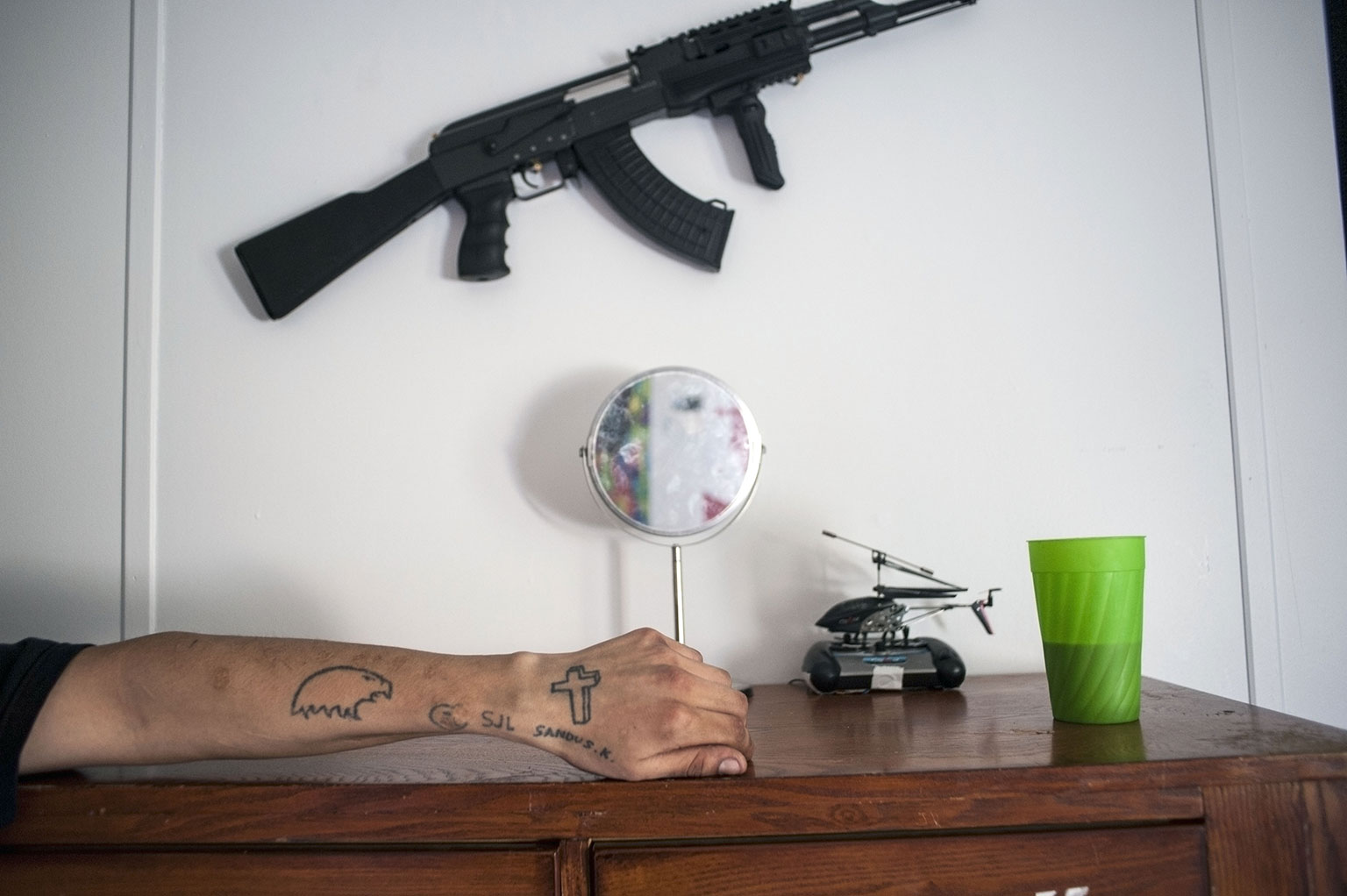
A man’s sinewy, tattooed arms tell a story of boredom, or of acceptance in prison and the tough exterior he had to cultivate. He sits with a rifle that has multiple meanings, headphones and wires that are attached to outside promises. At times, he carves antlers into beautiful moose locked in battle, into a bear fishing in a clear stream, into an eagle suspended between the thick spaces of bone and air. On the wall, he hangs a Mohawk flag. It reminds him to fight back—somehow. His art helps him keep going.
The graveyard is full of young people, some the same age as the glue sniffer. Plastic flowers that promise not to forget lay scattered in forgetfulness. Between 1975 and 1980, I counted more than thirty deaths among my late brother’s peers. The majority had attended residential schools and died before they reached thirty-five. In January 2014, in a space of two days, there were five deaths in my home community. On Attawapiskat and reserves like mine, depression overcomes many of those who bury their dead. We struggle, but we manage, and even maintain a culture of ceremony and celebration. Life goes on. Black humour prevails as we poke fun at ourselves, and at the powers that be. Still, if I can borrow the term faint hope clause, the spark of resilience endures and our people survive.
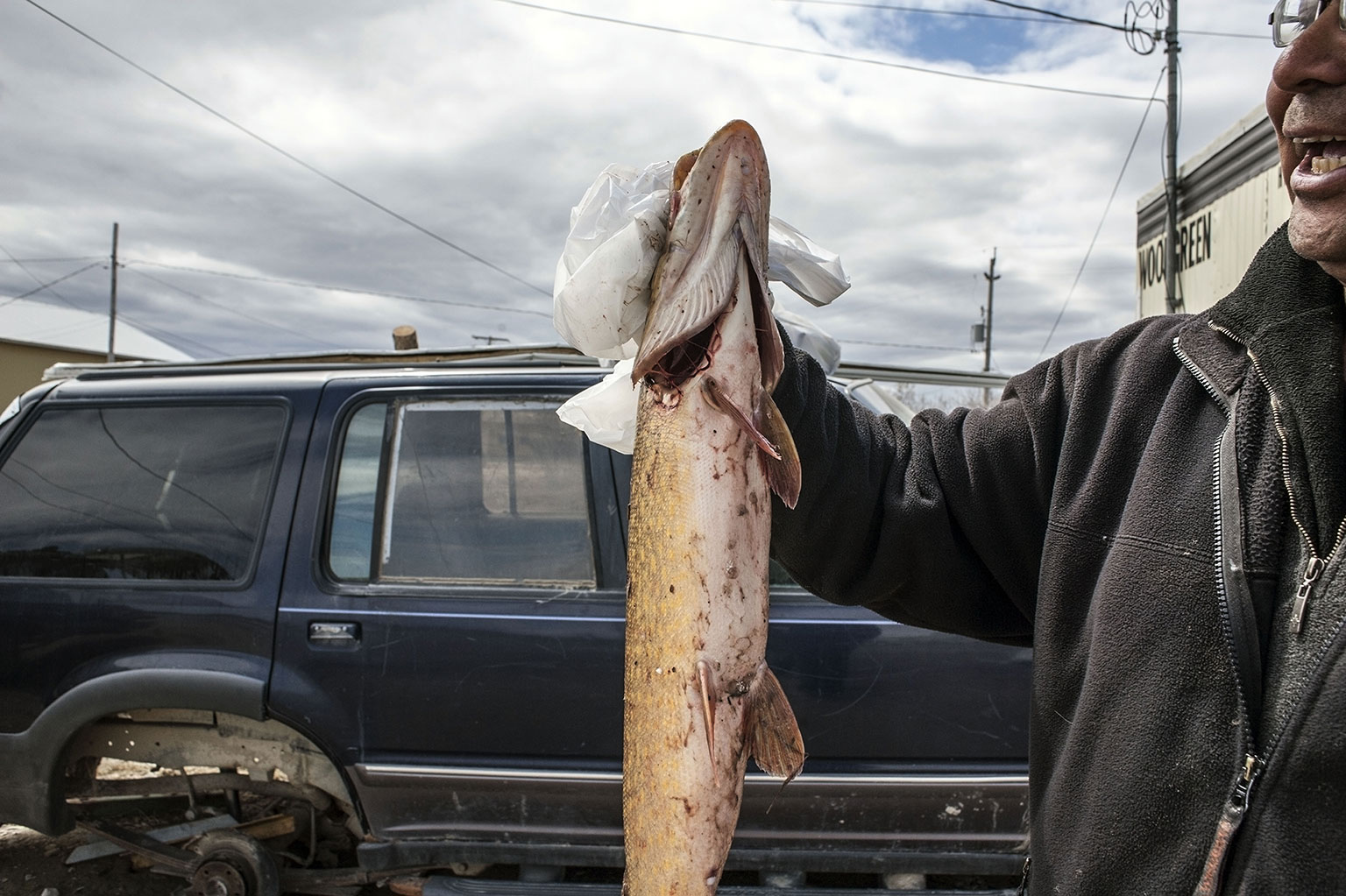
Children jump on a trampoline, attempting to beat their record heights. What are dreams made of but striving? Yet, when a child is led to believe the border of the reserve is all she will ever see, where can her dreams go? “Skip a rope. Ah, listen to the children while they play! Skip a rope.” A child’s unbuttoned jacket slaps the air as she alternates her feet, as the rope skims beneath her flight. “Skip a rope.” With feet glued together and arms outstretched just enough to keep going, she dances in a back-and-forth thump of exhilaration. She is not yet aware of mascot and sweatshirt controversies: “Got land? Thank an Indian.”
When I attended Blue Quills Residential School, near St. Paul, Alberta, I was not aware of the enormity of being institutionalized, nor did I know the consequences of the Indian Act as I skipped my own rope. When I was a girl, my cousin and I were kicking stones along the gravel road while we waited for the bus. We contemplated what we could be when we grew up. She told me she was going to be a nurse. I remember thinking how remarkable and unbelievable her dream was. When it was my turn, I had no idea. At that point, all I dreamt of was leaving home and the reserve; I had no career ambitions, so I said nonchalantly that I was going to be famous. Where that came from I have no idea. I had no idea what it meant, either. Somewhere in the psyche, synchronicity determines the many wayward paths we take toward our destiny. A kaleidoscope of environments, opportunities, and safety determines the outcome of our choices. An unhealthy environment, where children are famished emotionally and financially, can kill youthful longings.
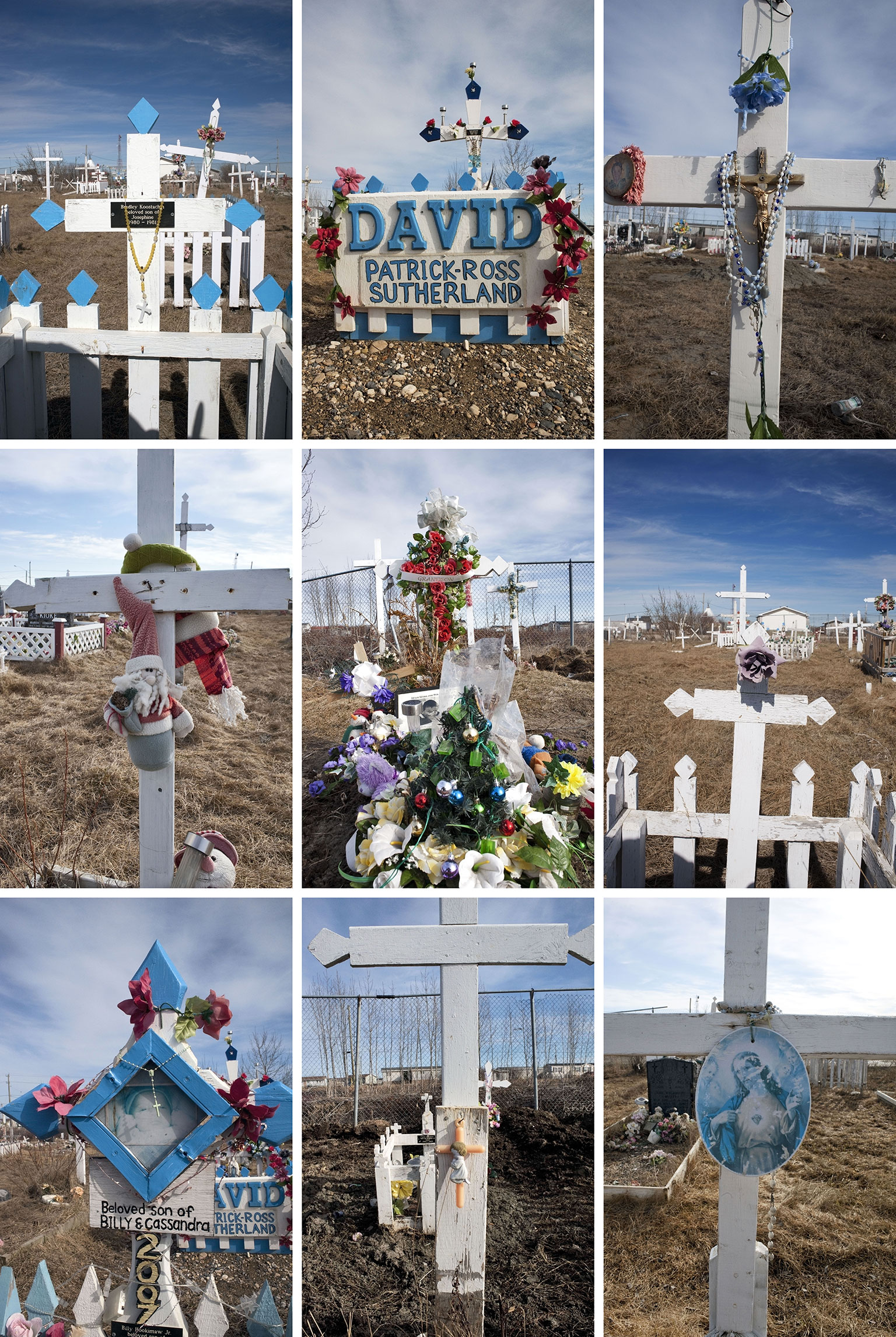
Some years ago, in the late ’60s, a group of Cree broke away from the Hobbema (now Maskwacis) and Ermineskin bands in Alberta. They were my relatives. In the mountains, they built canvas and plywood houses, and sustained themselves with the diminishing wildlife. Their desire was to return to a traditional way of life and to resurrect their cultural beliefs, because the reserves were rife with alcohol, drugs, and perpetual violence that cripple and decay the soul of our communities.
When the wind creates a tornado in an otherwise stable and ancient landscape, everything and everyone goes into shock, goes numb. Nothing remains the same. In essence, all Indigenous communities have experienced this. For a while, I saw the Hobbema and Ermineskin’s return to the land as a choice, one based on the faint but strong hope that life could be turned around if my relatives could only shelter their youth from settler society. I thought living in plywood tents was comfortable and even respectful, but did not realize that it was desperation, and a looming sense of hopelessness and doom, that drove them back to the bush.
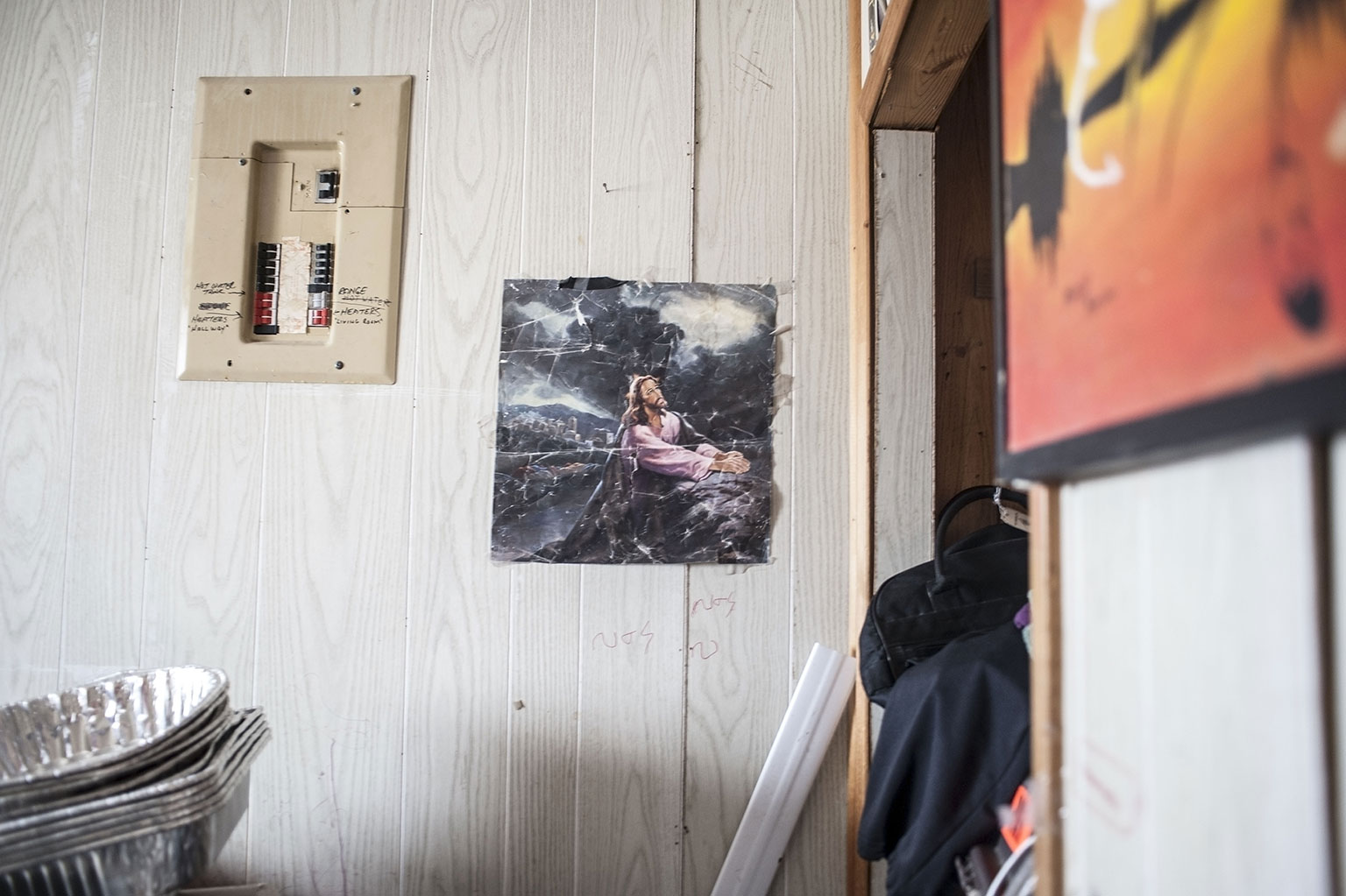
I grew up in a cabin of mud, straw, and wood. It was comfortable and warm, but it was not safe. Three of my family members were hospitalized due to tuberculosis, an affliction that strikes Aboriginal communities thirty times more often than it does the rest of Canada. Though we were clean and mindful of our surroundings, we were still in the matrix of TB, polio, and rheumatic fever that ran through Saddle Lake. My parents were survivors of residential school; my grandparents had also been marred by the church and government. Innocence and ignorance kept me from understanding the cause and effect of these traumas. At times, the psychological pressures of historic and ongoing genocide brought violence.
There aren’t any shacks of mud these days in Attawapiskat; they have been replaced by flimsy government housing. These homes are frigid in the winter and unforgiving in the scorching summer months, when flies invade every crevice. It’s no wonder the statistics are high—that half of Aboriginal children live in poverty, that too many litter the graveyards and fill the hospitals with tuberculosis or impetigo.
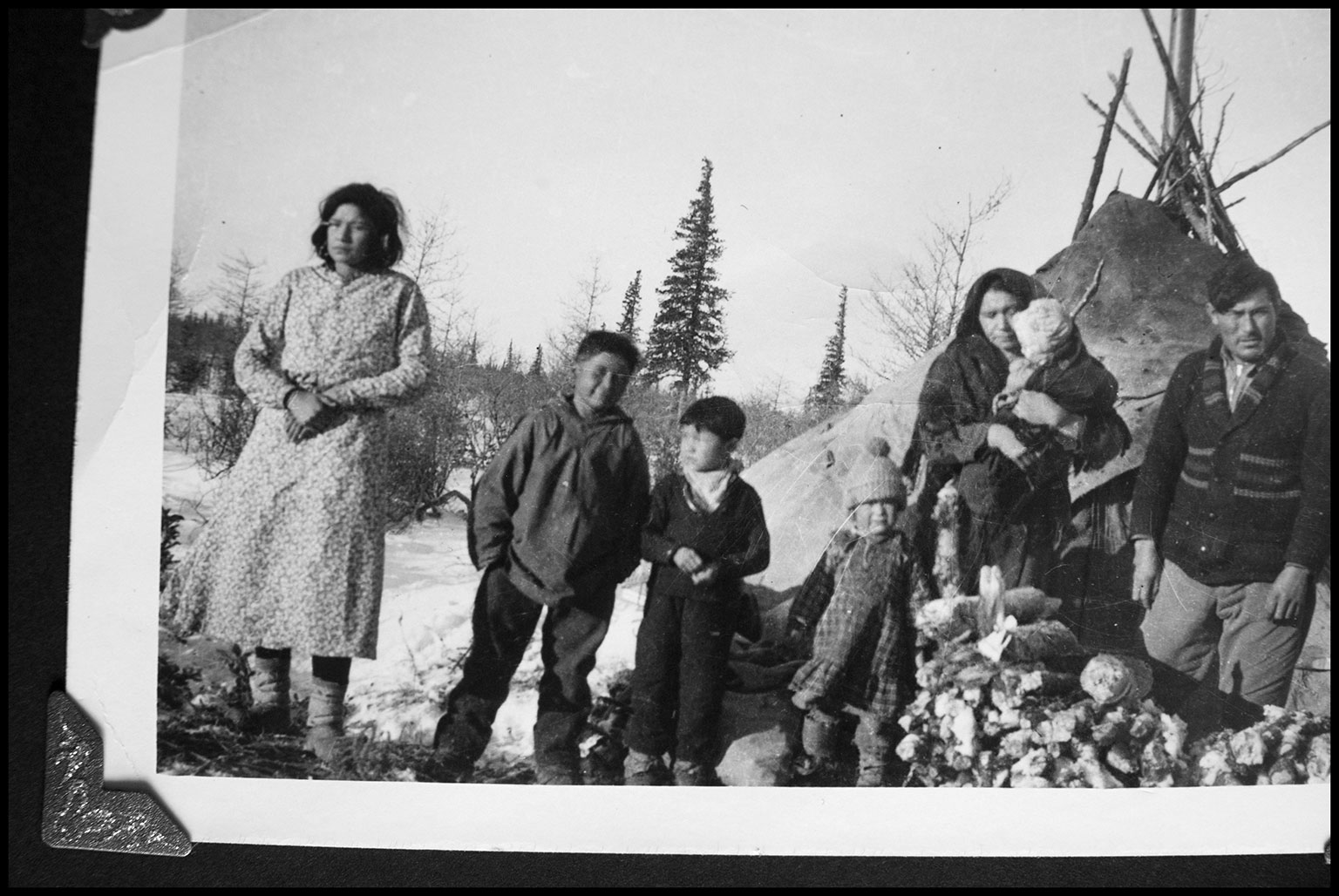
My heart is filled with hope, faith, and pain as I struggle to come to grips with the lengthy process of reclamation. Given the right circumstances, there are those who work to achieve the impossible and bring honour not only to themselves, but to the rest of the community. As I watch the sunrise and finish my coffee, Larry Towell’s photographs inspire me to sing a song of praise, to be thankful for the rekindling of the light.
This appeared in the November 2014 issue.


